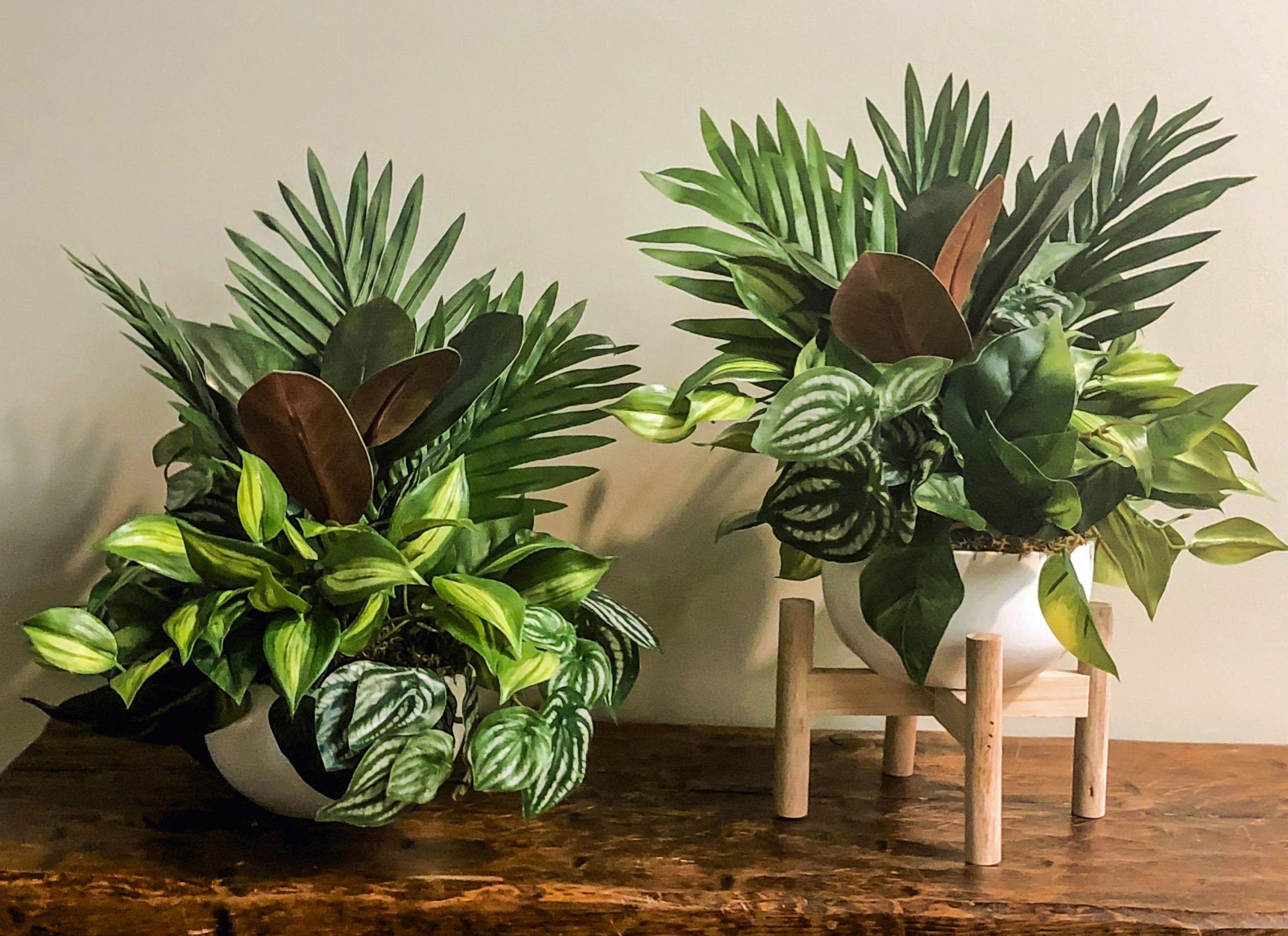How to look after your houseplants when you’re away on holiday
Experts offer tips on ensuring they don’t end up withered and dying
Summer holidays can be a problem for people who want their houseplants to survive in their absence – but there are many things you can do to help them stay healthy while you’re away.
Here, experts offer tips as to which are the more needy houseplants and how to maintain them.
Which houseplants are easiest to leave?

Some houseplants are harder to leave than others, says Claire Bishop
Claire Bishop, senior houseplant buyer at Dobbies Garden Centres, says: “Peace lilies are almost indestructible! These beautiful air-purifying houseplants actually thrive on under-watering so will likely be just as healthy when you return as when you left.
“Succulents, cacti and terrariums are also easy to care for and require very little maintenance as they prefer to be under-watered than over-watered. These plants can last up to a month without watering in summer, meaning they’re perfectly safe to leave for two weeks at a time.”
“Some plants will happily survive on their own without water for a couple of weeks, such as snake plants, pothos, and spider plants,” adds Kate Lindley, expert at plant food brand Baby Bio.”
And which are more tricky?
View this post on Instagram
Bishop says: “Calatheas are part of the Marantacaeae plant family which hails from tropical jungle areas of Africa and South America, so they thrive in a humid spot and benefit from regular waterings every few days.
“Ferns also require regular care and are happiest when kept moist and watered regularly. I’d recommend making plans for these plants to be cared for, if you plan to be away for a prolonged period.”
How do you prepare your houseplants before you go?
Move plants to cooler places and out of direct sunlight while you are away, advises Jeremy Hall, plant buyer at Squires Garden Centres.
“Remove any dead leaves or flowers from your plants, and give them a quick check for any pest infestations to make sure they’re in good general health before you leave,” Lindley advises.
What about watering?

A self-watering globe may do the trick
If you can’t get a neighbour or family member to pop in, consider self-watering containers, Bishop suggests. “Ideal for plants that thrive in moist soil, self-watering containers are handy devices that use a reservoir and irrigation to give plants access to water at the roots.” Self-watering globes are also great for keeping plants hydrated and can be used to water plants for up to two weeks, she adds.
Hall says you could just place houseplants in saucers topped up with a little water. “Alternatively, you might like to use some capillary matting and place the plant pots on top of this in one larger space such as a sink or cool bath. Placing plant pots on dampened capillary matting ensures plants absorb water which is slowly released over a period of time.”
To retain moisture in topsoil which will dry out first, add a light covering of bark, moss or stone to the base of the plant to keep it in favourable conditions, he adds.

Lindley advises giving thirsty houseplants a good drink to keep them going for a couple of weeks. “Aerate the soil to allow for an even distribution, and use tepid water with a few drops of a specialist fertiliser to ensure they have all of the nutrients they need to thrive.
If your pot has drainage holes, you can water from the bottom by submerging your plant in the water and fertiliser mixture for 10 to 15 minutes, until it’s stopped taking up water. Just be careful not to overwater, as leaving your houseplants in damp soil can cause root rot to set in,” she advises.
A good place to soak your plant would be in a bathtub, or in your garden if weather permits, Bishop suggests. “It’s worth wiping down your plants’ leaves too at this point to take off any dust and help them absorb light and maintain healthy growth when you’re gone.”
View this post on Instagram
If you have humidity loving plants, such as ferns or calatheas, place a tray of pebbles with a shallow layer of water near to the pots, or invest in a humidifier for the room, to ensure that they don’t go crispy, Lindley advises.
“It’s likely your home will be less humid while you’re away, as there will be no one at home to have a shower or put the kettle on. It’s also worth giving them a good mist before you go too.”
You can increase humidity by grouping plants together to help them create their own microclimate, she suggests. Hall adds that you can also leave bowls of water near your houseplant pots to create humidity in the air.
On your return, how can you get your houseplants back to full health?
View this post on Instagram
Bishop says: “The first thing to do is assess – depending on the methods you took to care for your houseplants, some of them may need a good watering, while some of them may be over-watered.
“If your plants appear dehydrated, give them a good soaking and let the water run through them, then repeat with feed included. Keep an eye on them and ensure your plants are well watered in the days and weeks that follow. If your plants have been over-watered in your absence, assess and you can gradually get back to a regular watering schedule.
“When you return home, snip off any dried leaves or dead material to encourage healthy growth and reposition your houseplants gradually if you moved them before you left – just make sure you don’t suddenly shift them from shade to direct sunlight as this drastic change could do more harm than good.”
The Press Association
Latest posts by The Press Association (see all)
- Dame Kelly Holmes: ‘Getting old is a privilege but ageing I don’t like’ - April 27, 2024
- 9 of the most iconic dance scenes in movies - April 27, 2024
- Why is melanoma on the rise? As new personalised ‘gamechanger’ skin cancer jab is tested - April 27, 2024
- King to resume public duties after positive cancer treatment - April 26, 2024
- 3 recipes to make from the new Hairy Bikers cookbook - April 26, 2024





















